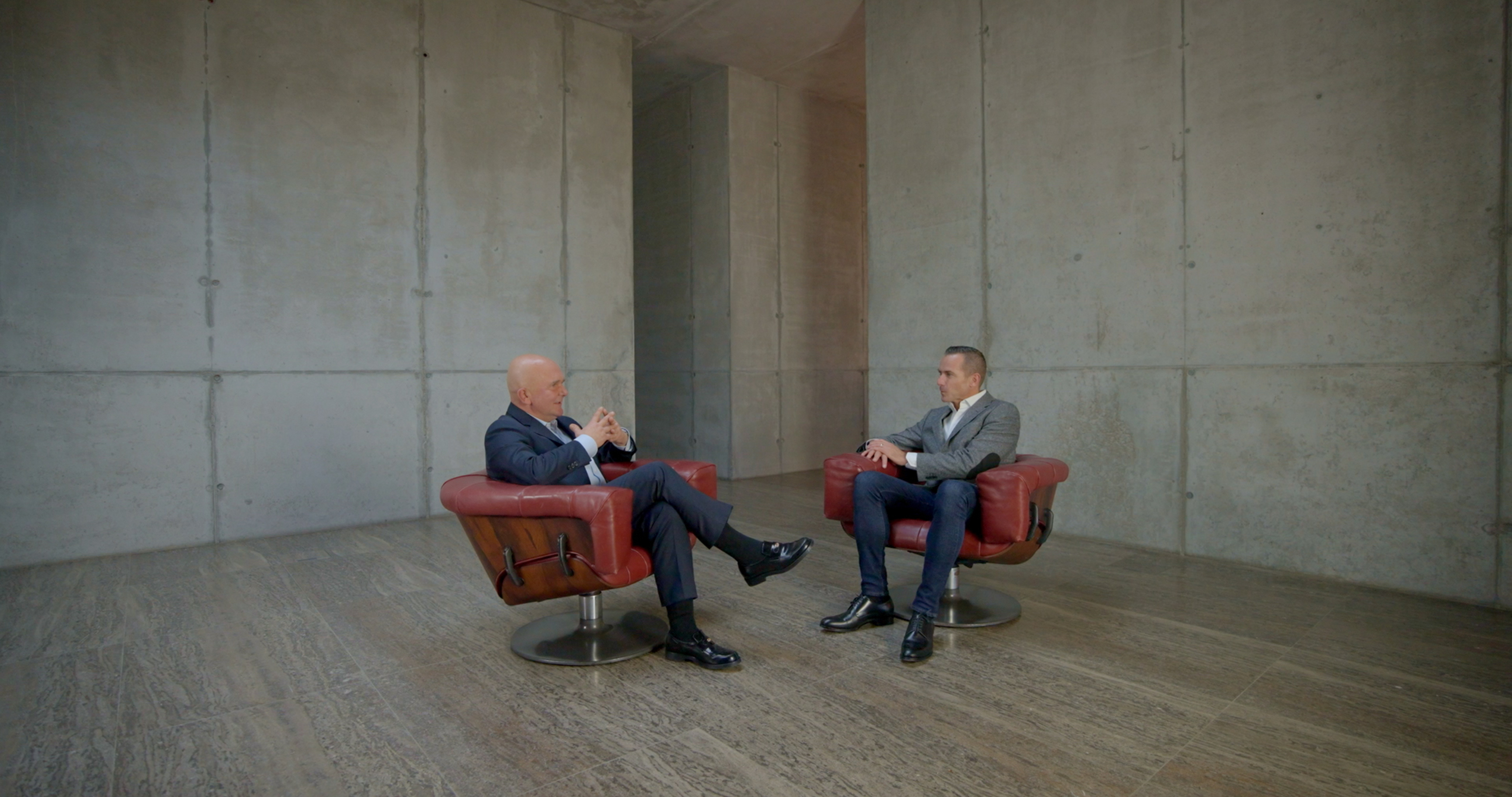Five theses on art
The future is an attitude. Art collector Christian Boros talks about why art is necessary – for him personally and for society.

Collector Christian Boros stands in front of a work by Belgian artist Kris Martin that’s on display in his art bunker.
Collector Christian Boros stands in front of a work by Belgian artist Kris Martin that’s on display in his art bunker.
Fifty-seven-year-old Christian Boros is a media entrepreneur and publisher, but art is his passion. At the age of 18, he bought his first work of art. Today, Boros owns one of the largest contemporary art collections in Germany. After purchasing the World War II era Reichsbahn bunker in Berlin’s Mitte district in 2003, he had it converted into a world-famous art gallery. Starting in 2008, he has showcased a changing selection of works from his collection, spread across 3,000 square metres of space. What’s more, Christian Boros sits on the Board of Trustees of Freunde der Nationalgalerie (Friends of the National Gallery) in Berlin and serves as a member of the Grimme Institute’s advisory board, the Fondation Beyeler’s Committee of Patrons and Art Basel’s Global Patrons Council. As someone who appreciates artists as thought leaders who constitute an intellectual avant-garde, he sums up his philosophy in five theses on art.

From once serving as a Red Army prison through incarnations as an East German banana warehouse to housing post-reunification techno clubs, the Boros art bunker has a colourful history.

Six photograms by Swiss artist Fabian Marti hang in one of the bunker’s rooms. The bunker used to be divided into three floors.
From once serving as a Red Army prison through incarnations as an East German banana warehouse to housing post-reunification techno clubs, the Boros art bunker has a colourful history.
Six photograms by Swiss artist Fabian Marti hang in one of the bunker’s rooms. The bunker used to be divided into three floors.
1. Art is an outlook.
“Before the Renaissance, artists were primarily regarded as skilled craftsmen. From the 15th century onwards, art was increasingly prized for its originality rather than as a quality product. I believe the key questions we should ask about art are: What does an artist think? What’s uppermost in their minds? What’s their perspective on things? A work’s conceptual power, its meaning and ideological position, together with the artist’s ability to execute their ideas determine its relevance.“
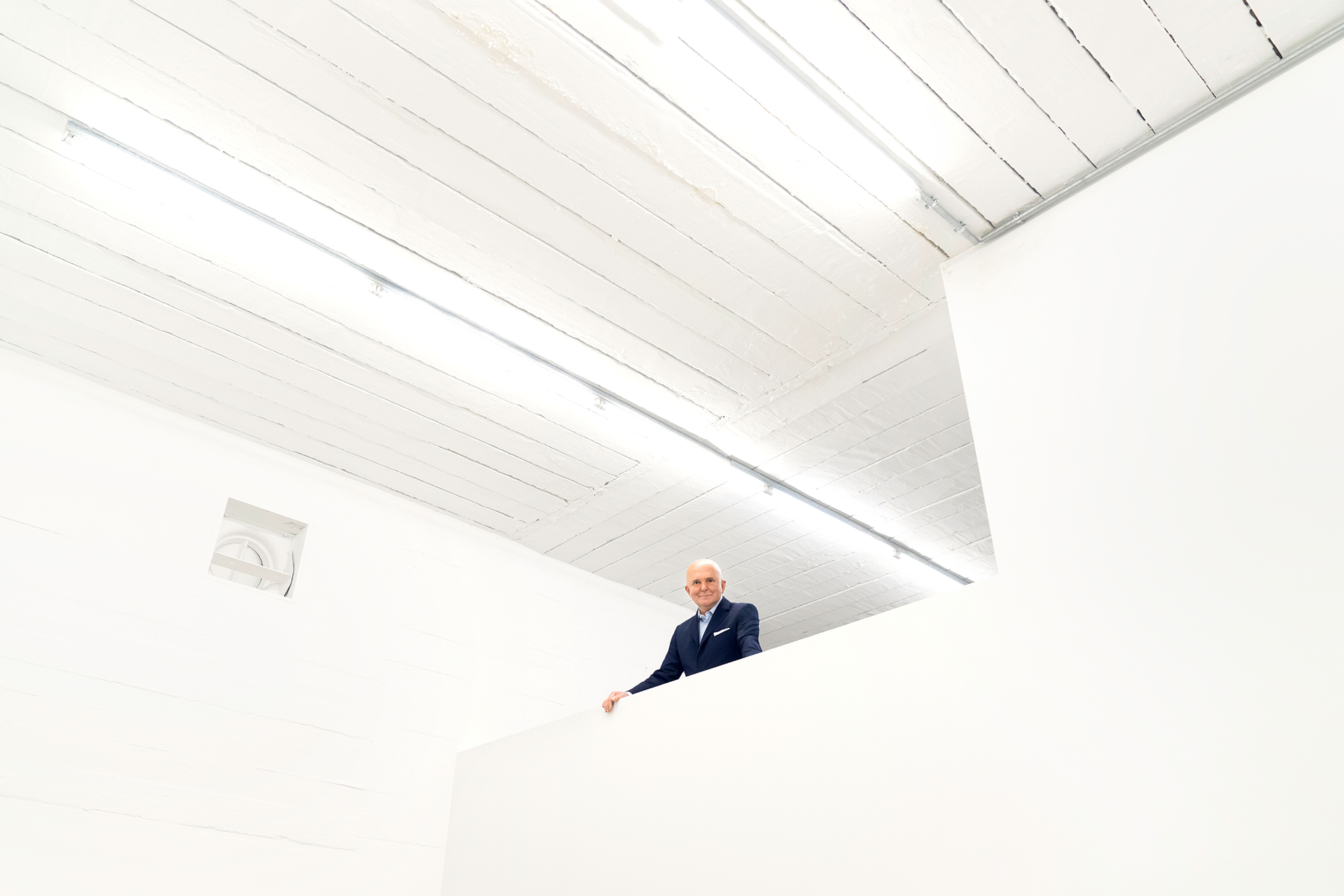
Over the course of a five-year renovation project, Christian Boros transformed the bunker’s original 180 tiny rooms into exhibition spaces suitable for his art collection by removing concrete ceilings and interior walls.
Over the course of a five-year renovation project, Christian Boros transformed the bunker’s original 180 tiny rooms into exhibition spaces suitable for his art collection by removing concrete ceilings and interior walls.
2. Art is incomprehensible at first.
“The public at large has always failed to understand an artist’s work at the time of its creation. That’s because art breaks with convention to create something truly new. Consequently, it cannot be measured against familiar aesthetic standards. It’s scandalous and provocative because that’s the only way to push back perceptual boundaries and innovate.“

Three concrete blocks serve as a reminder of the bunker’s remodelling. In order to remove the torn-down walls from the bunker, they were chopped into hundreds of pieces.
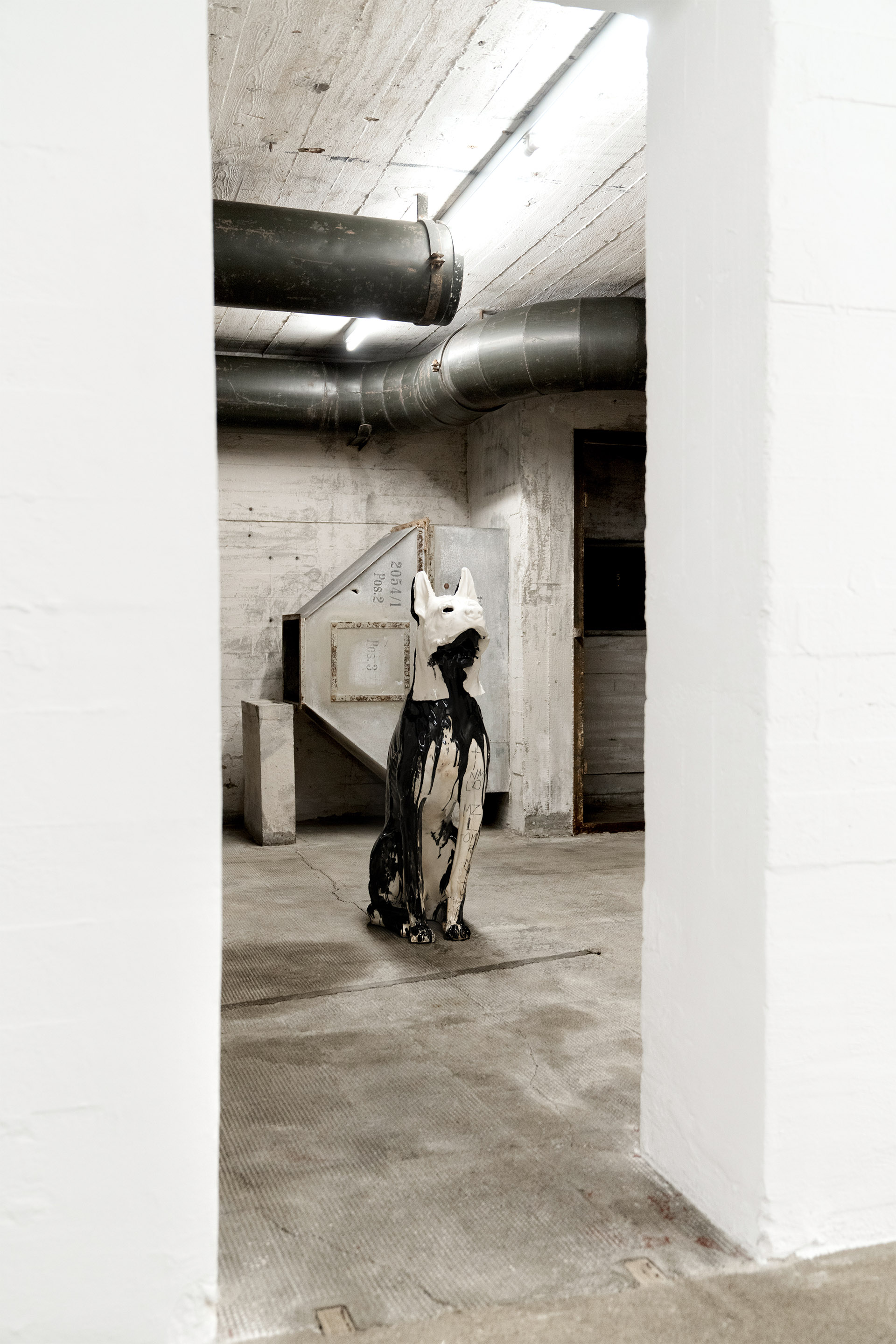
Artist Fabian Marti’s ceramic dog now keeps guard in the room where the ventilation system used to be.
Three concrete blocks serve as a reminder of the bunker’s remodelling. In order to remove the torn-down walls from the bunker, they were chopped into hundreds of pieces.
Artist Fabian Marti’s ceramic dog now keeps guard in the room where the ventilation system used to be.
3. Good art is subjective.
“As a work’s originator, an artist puts their stamp on it by signing it. They are bold enough to say “that’s me”. No artist deals in truths or objective statements. Artists are free and answer to no one except themselves. We can learn from the way artists perceive things. An open society can gain new insights into the present by engaging with different artists’ diverse subjectivities. That’s what I mean by “learning” and expanding our personal horizons.“
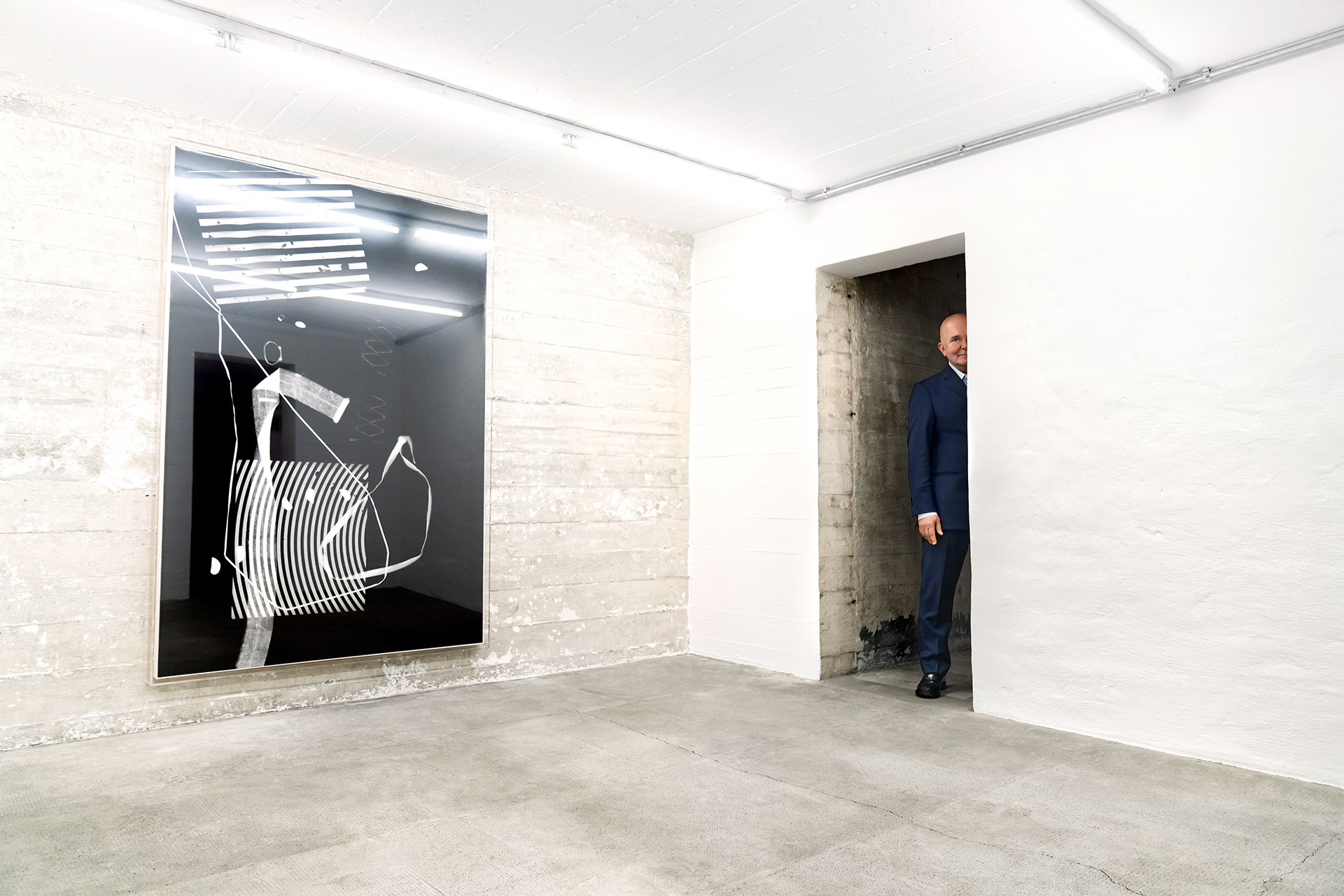
A photogram by Fabian Marti hangs on a wall. Small spaces alternate with larger ones across the art bunker’s five floors.
A photogram by Fabian Marti hangs on a wall. Small spaces alternate with larger ones across the art bunker’s five floors.
4. Is art beautiful?
“Art is not supposed to beautify the environment, your home or a museum. Art is neither a decorative item nor a means of prettifying life. And it is not a handicraft. First and foremost, art is an outlook on the present and an artist’s individual way of expressing that through various different media. We may experience the way an artist gives expression to their outlook as uplifting, grating, mind-blowing, stimulating or moving – but it’s never merely beautiful.“
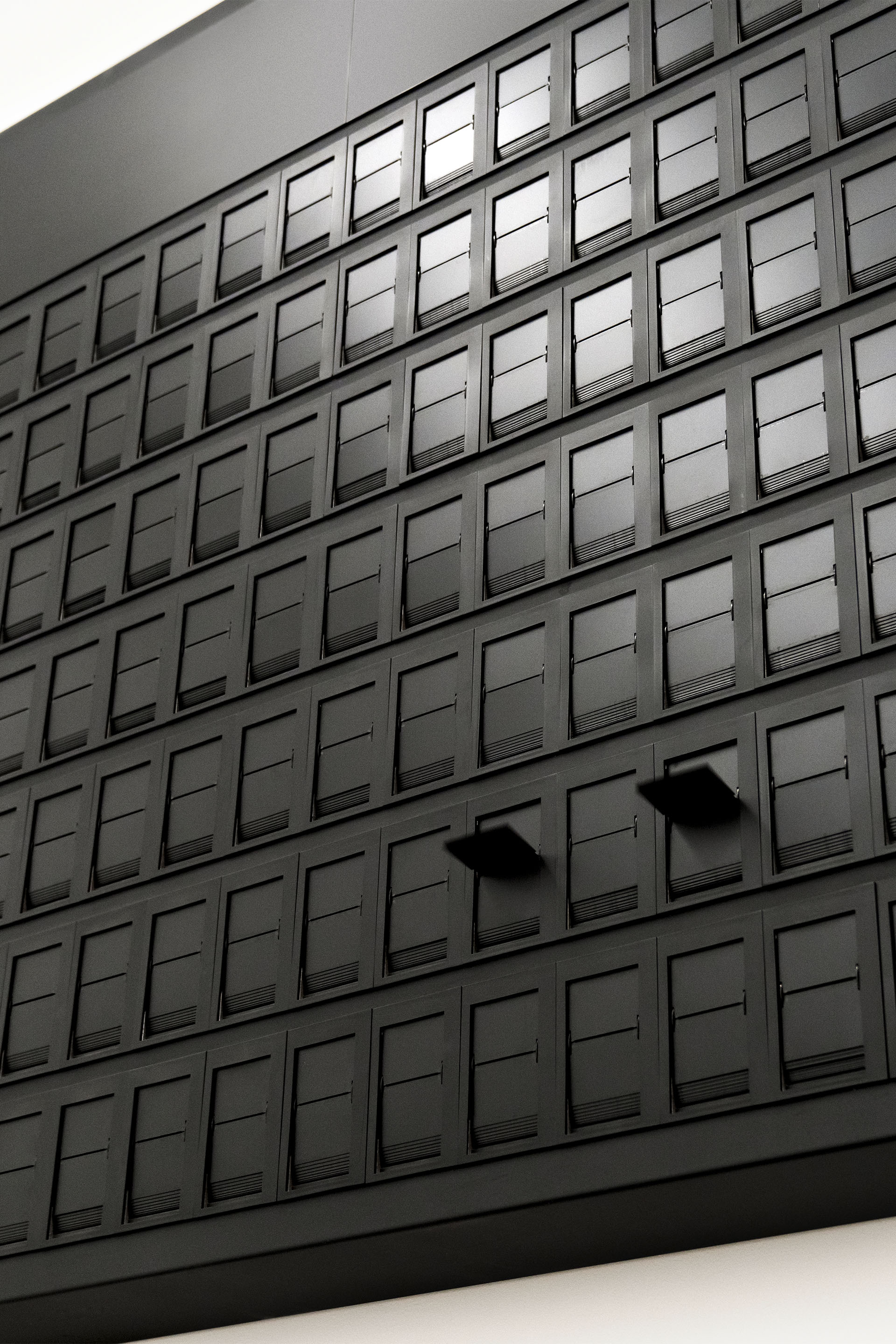
Although the black flaps on Kris Martin’s airport information board installation are constantly turning, they never reveal arrival or departure times, instead remaining blank.

Henrik Wenders (right), Head of Brand at Audi AG, in conversation with Christian Boros.
Although the black flaps on Kris Martin’s airport information board installation are constantly turning, they never reveal arrival or departure times, instead remaining blank.
Henrik Wenders (right), Head of Brand at Audi AG, in conversation with Christian Boros.
5. Art must always be honest.
“Art shouldn’t be a slave to fashions or trends. Instead, it must confine itself to presenting and visualising an artist’s statement in a credible and unique way. That’s the only way for art to enrich society, help push back boundaries and provide real insights – today and tomorrow.“
Conversations on Progress: Henrik Wenders meets Christian Boros
